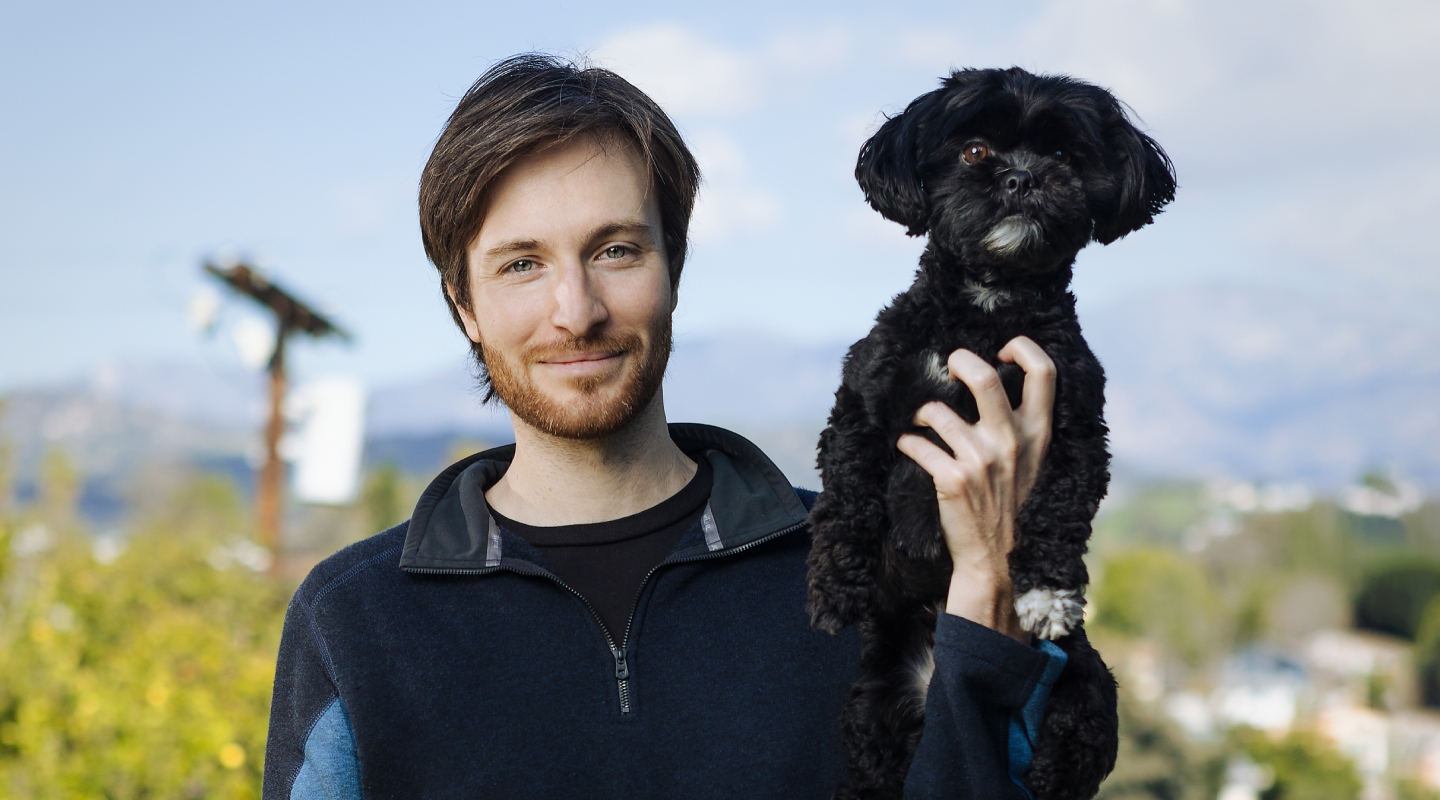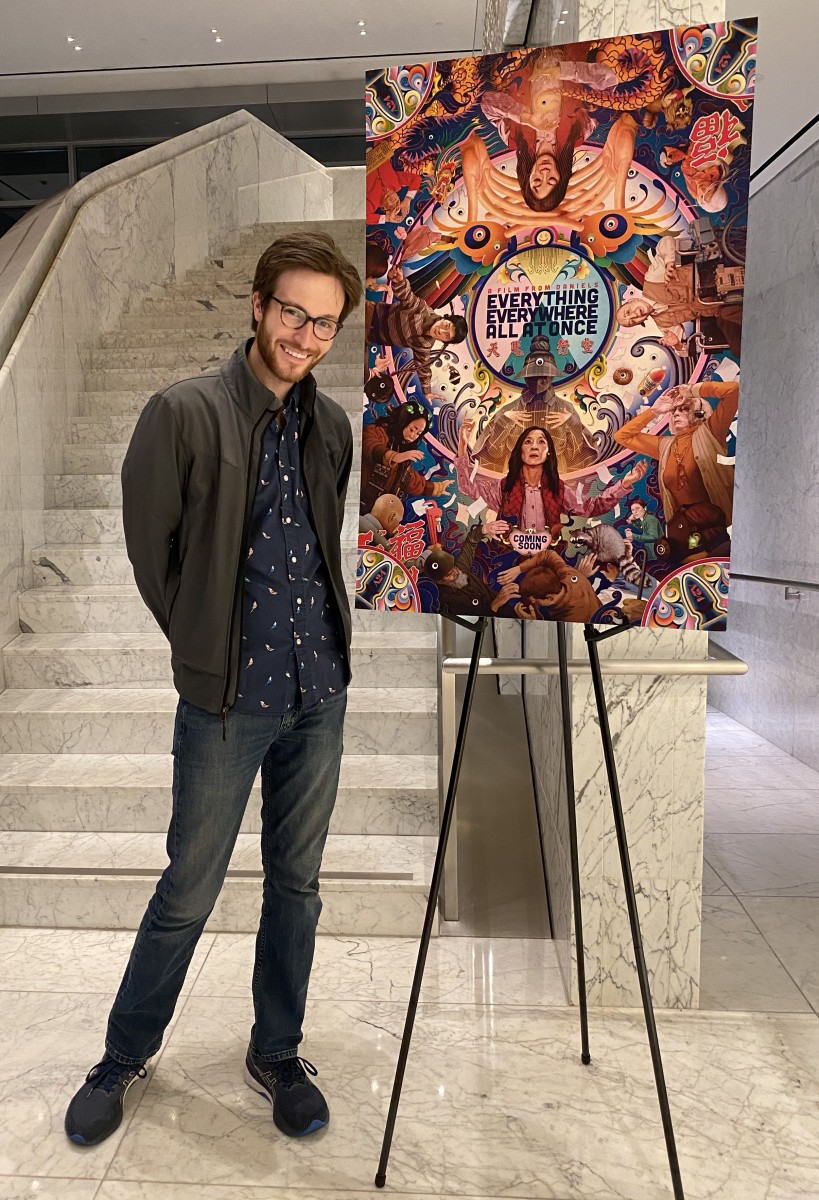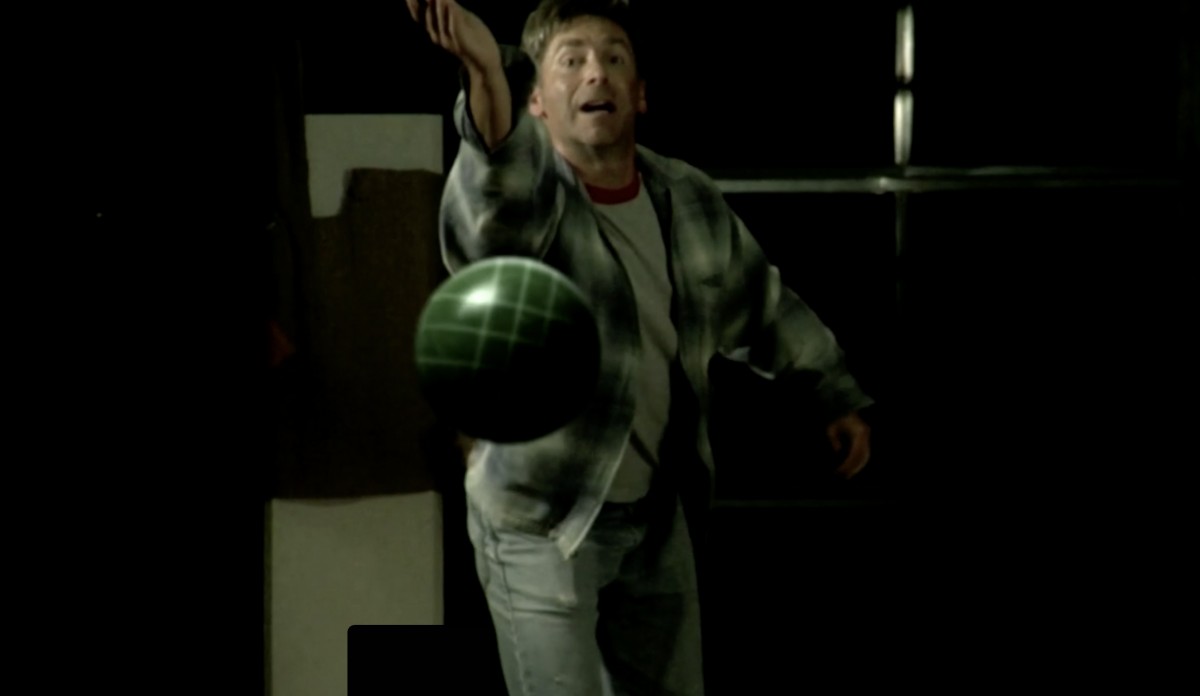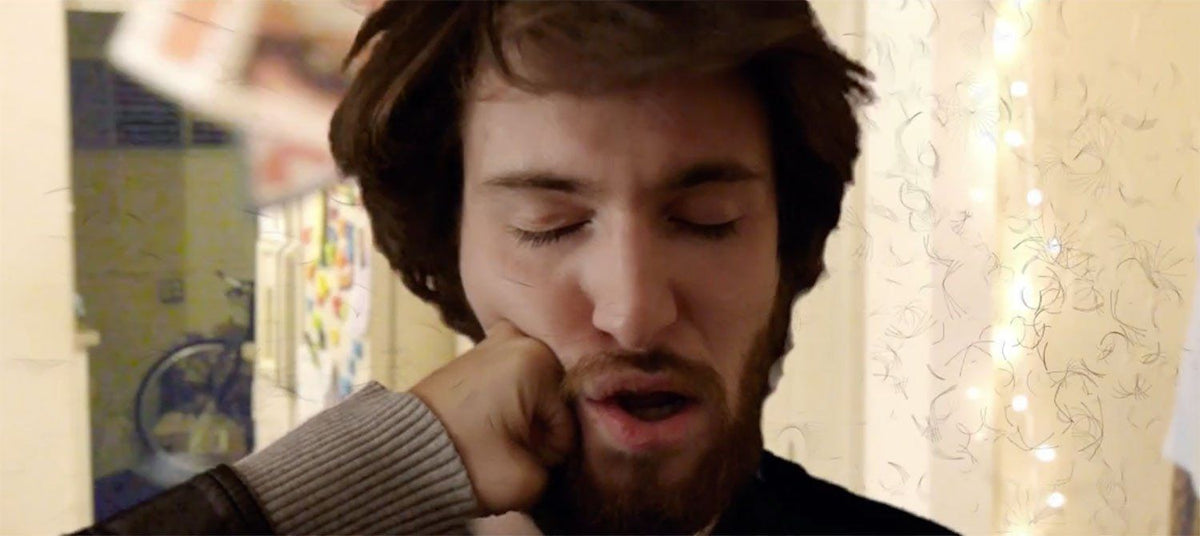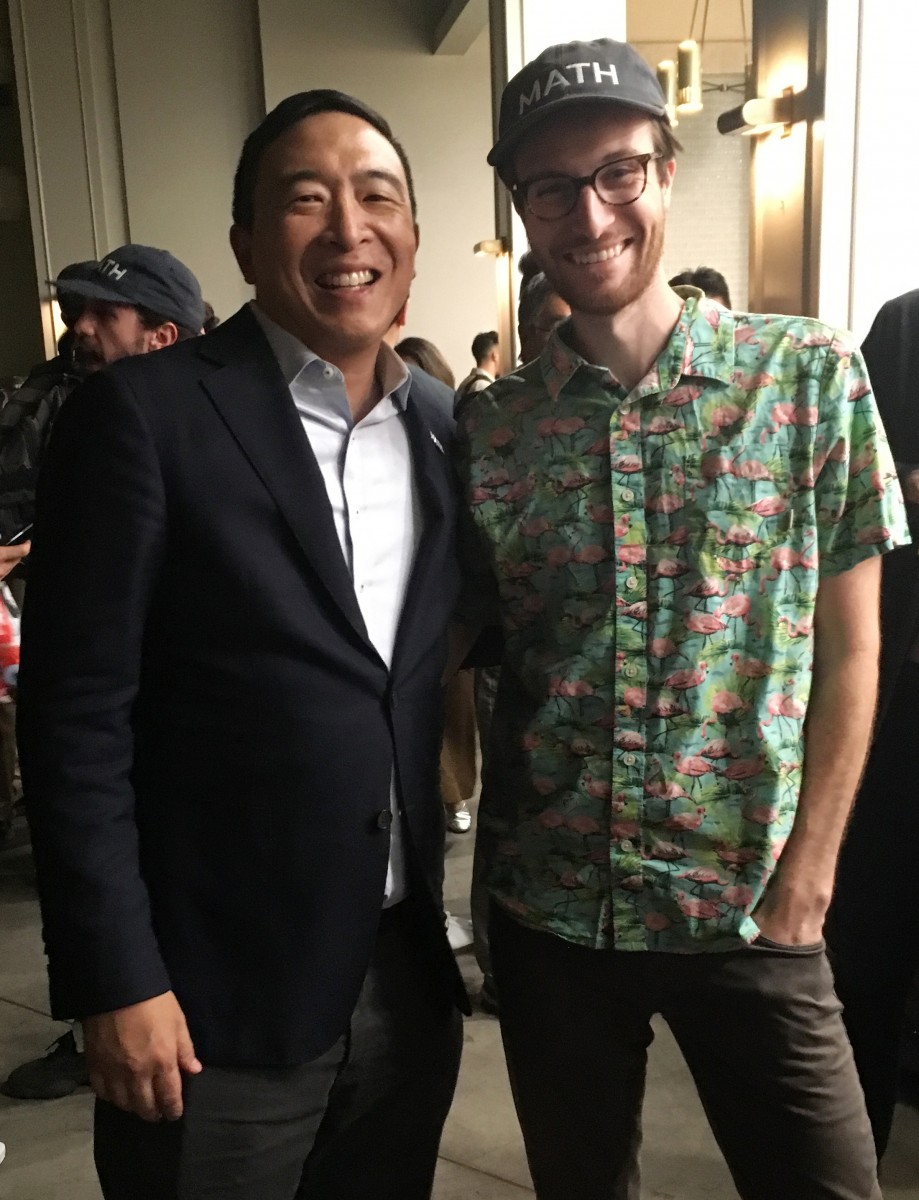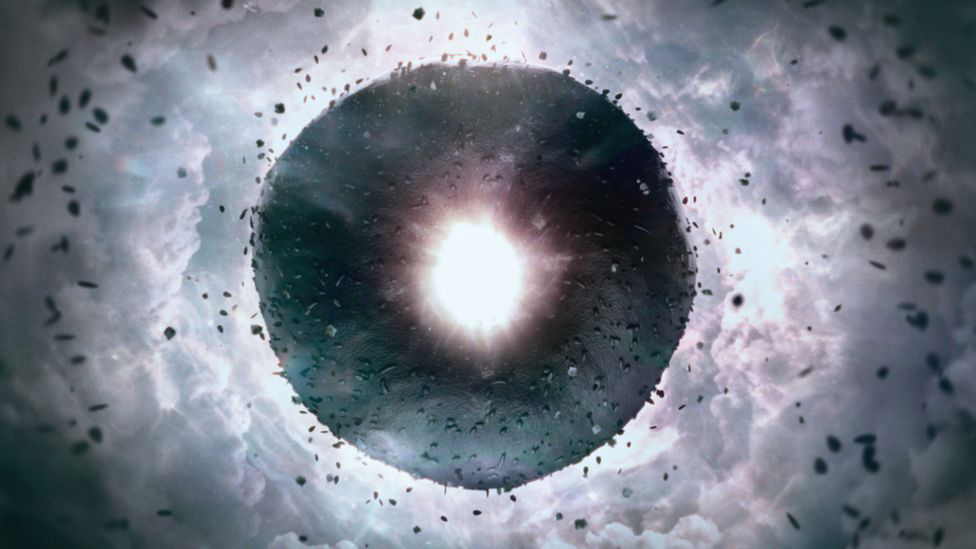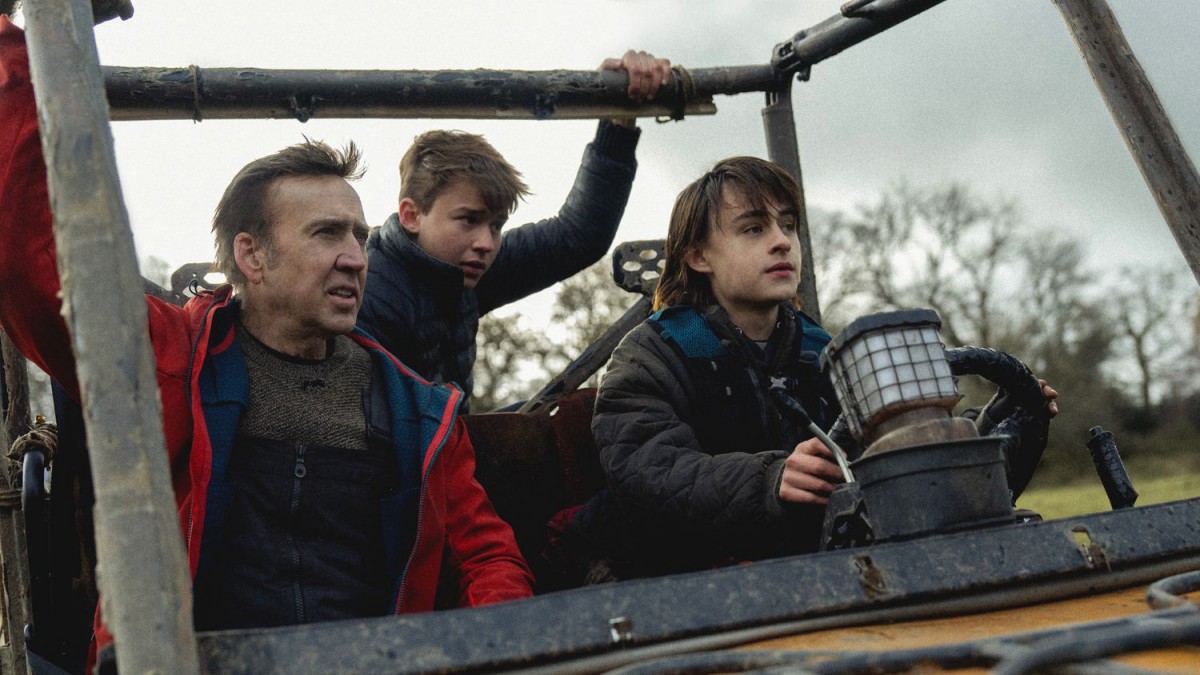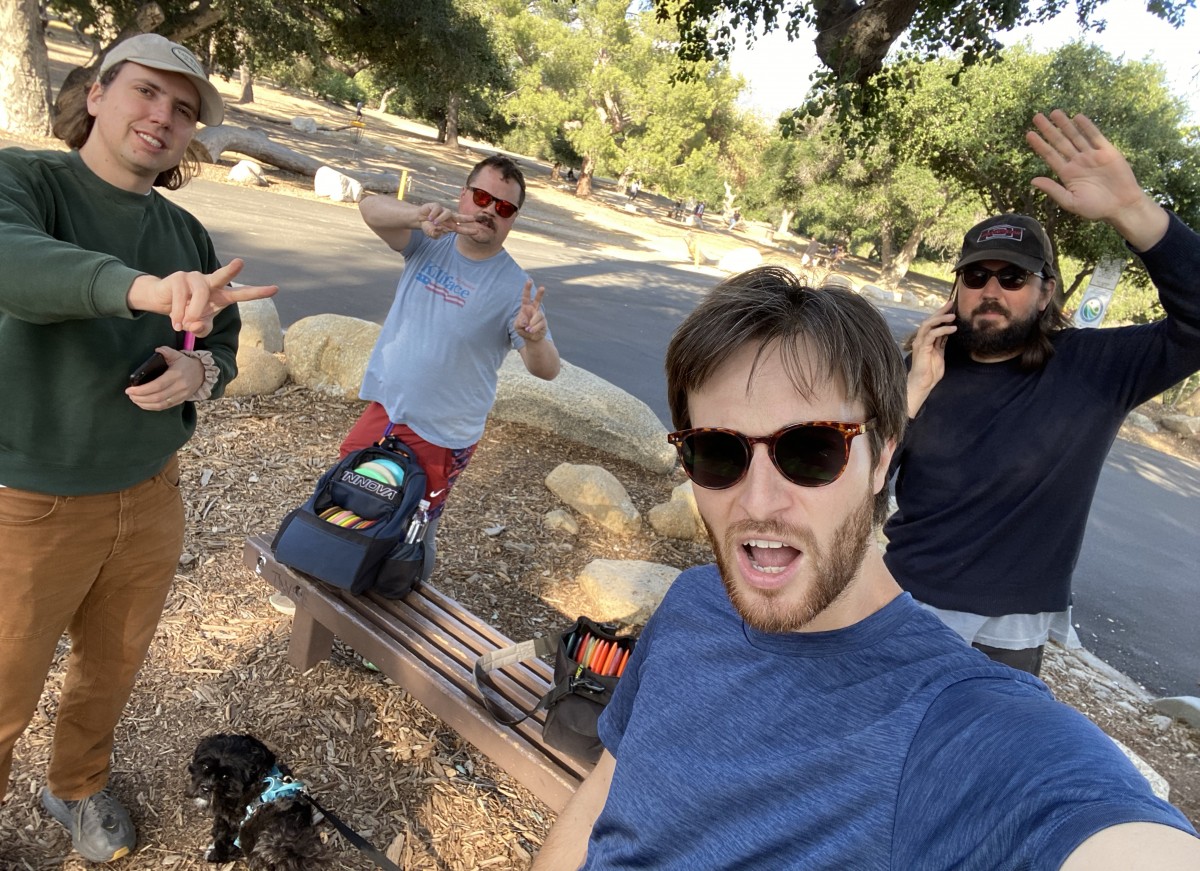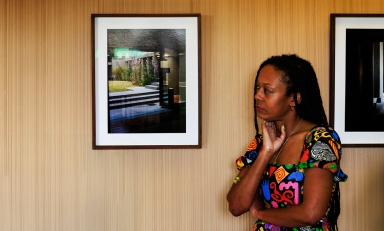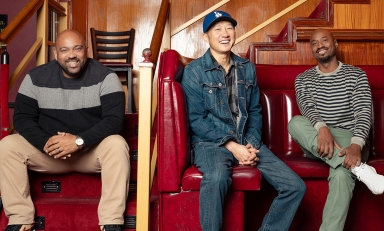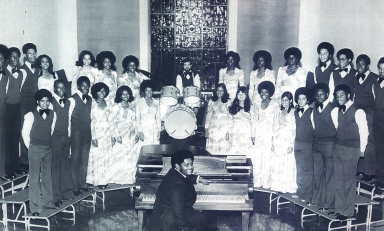Everything Everywhere All at Once became the indie film sensation of 2022—and Zak Stoltz '10 assembled the small visual effects team to make bagel magic
In an alternate universe, Zak Stoltz ’10 is a professional disc golfer, a sport he picked up as a student to Oxy and continues to play even now on his home course in La Cañada Flintridge. “I’m an amateur,” he explains, “but I play it the highest level that you can play at before playing at a professional level.”
In another universe, Stoltz might be a biomedical engineer, making prosthetics and cutting-edge artificial organs as he aspired to growing up in Washington state. “I was all math and science all throughout high school,” says Stoltz, who was so committed to those studies that he got his fine arts and PE requirements waived by the high school in order to take more AP physics and other math and science classes.
But in what we’ll call the Occidental Universe, Stoltz has perhaps the most improbable narrative of all: visual effects supervisor on an Academy Awards front runner. Since its premiere at South by Southwest last March, Everything Everywhere All at Once has endured in the cultural conversation. Directed by Daniel Kwan and Daniel Scheinert—collectively known as Daniels—the multiverse-hopping science fiction comedy has exceeded all expectations critically (rated 95 percent fresh on Rotten Tomatoes) and financially ($107 million worldwide).
Building on the film’s success, distributor A24 went into awards-campaign mode around Labor Day. (“It makes us feel like we messed up somewhere,” Kwan jokingly told The New York Times in October. “The whole world likes it? What did we do wrong?”) Critics’ year-end best lists solidified Everything Everywhere’s trajectory, and that momentum rolled into the new year, culminating in a field-leading 11 Oscar nominations, including Best Picture, at the 95th Academy Awards on March 12.
“We thought it was going to be very polarizing,” Stoltz admits during a visit to campus in January. “No one had any idea that it was going to be a universal hit. And if anyone had said while we were making this movie, ‘Oh, this could get nominated for Oscars,’ we’d be like, ‘Get out of here—this is a weird movie with hot dog fingers.’”
While the film was shut out of the Oscar race for visual effects, Stoltz and his team were nominated for both the BAFTA and the Critics’ Choice Awards for their work. “I still can’t believe that people are putting us in the same category as Avatar,” he says, “We didn’t have the resources and computing power and all the different people working on one very small thing in some of these big movies.”
What sets Everything Everywhere apart from an Avatar or Marvel movie is that’s a multiverse film grounded in a real universe with a relatable protagonist—Evelyn, the unassuming immigrant laundromat owner (played by Oscar nominee Michelle Yeoh) who has been tasked with saving the world. “The reason that I believe we’re getting mentioned in the same sentence as some of these bigger movies is that we did achieve something spectacular,” Stoltz says. “I think the visual effects contribute to what makes people love the movie—just the flow of it and how it all works together.”
You won’t find it on his IMDb page, but the first film Stoltz wrote and directed was called The Genie, the Girl, and the Ghoul, which he made when he was 7 or 8. “My younger sister, who’s three years younger than me, played a princess. I was some guy who transformed into a monster,” recalls Stoltz, who wore a Halloween mask for the part. (Alliterative title notwithstanding, “I don’t think there was a genie,” he adds.)
Stoltz continued to make his little movies, and by the time he was in high school, his narratives were “surprisingly complex,” Stoltz says—like the 10-minute short he and some friends from his Japanese class made after watching the 2003 remake of The Texas Chainsaw Massacre. “There are so many continuity errors in this movie, and we knew this as teenagers,” he says. The resulting parody, The Mukilteo Chainsaw Massacre (named after the city where they lived) built its production gaffes into the script, like when a ketchup bottle comes into frame following one of many messy murders.
When Stoltz arrived at Occidental, attracted by the College’s L.A. location, filmmaking was more of an avocation than a professional aspiration. But a film theory class taught by Professor Broderick Fox made an impression on Stoltz, exposed him to films like City of God, and he pivoted from math and science to an art history and the visual arts major (Later, Stoltz contributed visual effects for The Skin I’m In, Fox’s 2012 documentary.)
While the number of media arts and culture majors has grown exponentially in recent years, “I think there were nine [art history and the visual arts] majors in my graduating class,” Stoltz notes. “We learned a lot about film theory and all these different concepts and how to interpret things in a film that you’re watching and how to understand story structure. But when it came to actually making your own thing, the technical aspect of it is where my science background came into play because we learned how to edit, and we learned some basic things like three-point lighting, but a lot of the post-production stuff like visual effects wasn’t really on anyone’s radar.”
Stoltz wound up teaching himself visual effects using Adobe Creative Suite in the College’s editing lab his junior year. With an eye toward a career as a producer, he completed the requirements for a minor in economics. “Then I realized that directing was really what I cared about the most,” he says, “Learning visual effects was the catalyst for that.”
Coming off the success of his prize-winning short In Frame, which he made his junior year, his senior thesis project was a 16-minute short titled Bocce—the story of a down-and-out underground bocce tournament champion looking for redemption after throwing a match, ruining his family life and career. “I wanted to do something big and epic,” says Stoltz, who raised $5,000 from family and friends to rent equipment for the shoot. Working closely with producer Alex Zeldin ’12 and director of photography Julien Lasseur ’11, “It solidified this idea that I can make a go of this. Bocce had this big premiere [in Thorne Hall] and everyone in attendance was excited and cheering.”
After graduation, Stoltz moved back to the Seattle area for six months: “I was just planning on being back there until I could figure out where to live down here.” He points to two very specific events as big catalysts for his career. “The first one was during college between my junior and senior years.I went to a short film screening at the Seattle Film Festival,” he says, “and I didn’t like the movies that much.” One exception was Fortune Hunters, which he later learned was directed by Oxy graduate Thom Harp ’92.
The two subsequently met, and Harp got Stoltz a job as a production assistant for a shoot he was doing for the Seattle Public Libraries. Thanks to a producer on that project, he wound up getting a gig a year later as a post-production assistant with Lucid Inc., an independent production company in Seattle. That turned into a longer stint with Lucid, where he worked his way up from an editing assistant to creating motion graphics for a series of Blackberry commercials that aired around the world.
After six months of nonstop work and travel, Stoltz tired of the grind and moved back to Los Angeles without a job in 2011. It was slow going at first—“I’d just pick up whatever work I could whenever I could”—but he helped out with Lasseur’s senior thesis film as well as a short made by Zedlin. An acquaintance of Lasseur gave Stoltz some small visual effects jobs, and he also was doing color grading, editing, and “anything post-production that I could,” he says. “Even though I wanted to direct, I had my side hustle working toward the main thing.”
That brings us to the second big catalyst for his career. Stoltz and classmate Mandla Gobledale ’10 (with whom he wrote a film review column for The Occidental Weekly) frequently attended the Flux Screenings Series held at the Hammer Museum at UCLA, and a screening in fall 2011 included a one-minute short film made by “these two guys named Daniel,” he recalls. “It was one of their earliest things called My Best Friend’s Wedding/My Best Friend’s Sweating. It was very silly but it was great.”
On the night of the screening, he continues, “I got super shy but made a point to introduce myself to these guys. They were standing right behind me, and I introduced myself to them very awkwardly. I gave them my card, and that was it. I sent them a message on Vimeo and then never heard from them. At one point in the conversation, Dan Kwan said, ‘Yeah, just keep making stuff’—the most basic advice you give to anyone.”
That December, Stoltz completed a short, Beard Punch, which he posted to Vimeo and YouTube. Four days after sending it the Daniels, he got a call from Scheinert, seeking his help to finish some visual effects for a short film they were making. So, he picked up a hard drive from Scheinert’s house and worked on the project while they were off shooting a music video in Portland, Ore.
That led to even more video work, including songs by Mark Foster & Kimbra as well as Tenacious D. “We realized that we have similar sensibilities,” Stoltz recalls. “There was a stretch where we were working on this stuff and sleeping under our desks in Dan Kwan’s bedroom. Somehow over the course of that, I guess we became friends.”
After the Daniels sent Beard Punch to their producer, Stoltz landed representation as a music video director. In addition to doing visual effects for the Daniels and their director pals, Stoltz directed 13 music videos (including Fitz and the Tantrums and German musician/DJ Robin Schulz) and some commercials while doing visual effects for his own work.
Stoltz’s directorial career crested in 2018, when he made an eight-episode web series called Breakarate for go90, an Internet TV service and mobile app owned by Verizon. The series was in post-production when Verizon pulled the plug on go90 in July 2018. (The episodes are currently streaming on the Roku Channel.)
While he was waiting for the show to come out, Stoltz began volunteering for Andrew Yang’s presidential campaign. “I realized very quickly there was no infrastructure at all for California,” he says. “Coming from film production, I know what it takes to start from an idea.”
It wasn’t long before Stoltz found himself in the role of regional organizer. His worlds converged when he and Dan Kwan attended a Yang event at CAA, where they shot an impromptu viral video for Yang called the “1K Slap,” playing off his proposal for a universal basic income of $1,000 per month for every American age 18 and over. “I ended up throwing a thousand dollars at Andrew Yang’s face, which was very fun,” he recalls with a smile. “But he was always in campaign mode—I met him a few times, but we never really connected.”
In the middle of the campaign, Stoltz was offered a full-time paid position with the presidential campaign to oversee all of the regional grassroots organizers. Around that same time, the Daniels offered him a position as visual effects supervisor for their sophomore feature (a $14 million follow-up to their 2016 debut, Swiss Army Man).
“We hadn’t worked together in a long time,” Stoltz says, “but they wanted me to come on for that because it was like they knew that they didn’t like the process of working with a big visual effects company. They liked the old way that we used to do things in music videos—all of us hanging out in the bedroom, working together, iterating on ideas, treating it as a very playful process. All of their stuff is made in post-production.”
Seeing “the writing on the wall” for Yang’s presidential prospects, Stoltz left the campaign to go into preproduction on Everything Everywhere (and in February 2020, midway through principal photography, Yang dropped out of the race).
Stoltz’s experience on the Yang campaign translated to his new role in at least one respect: getting maximum results out of limited resources. “We didn’t have a lot of money for visual effects,” he recalls, “so I had to figure out, ‘How do we scale up this thing that we had done before?’”
In addition to Stoltz, the core visual effects team included Ethan Feldbau and Ben Brewer (both of whom, like the Daniels, were graduates of Emerson College), Jeff Desom, and Matt Wauhkonen. Those five people were responsible for about 90 percent of the 500 visual effects shots in the movie. “We were proud of the fact that we did this movie with such a small team,” Stoltz says. “We are all directors who learned visual effects in order to accomplish the things that we needed to accomplish for our own work.”
Because most of the team has worked with the Daniels before—including director of photography Larkin Seiple, another Emersonian—“We had this shared language,” Stoltz says. “We’d get a lot of direction that was not very specific—it was very much about the emotion of a scene. That’s always the aspiration for the visual effects to not get in the way of the story, but to support it.”
Principal photography for Everything Everywhere was all but completed when COVID-19 shut down the set with one more day remaining in the regular schedule. The pandemic created a new challenge for Stoltz and his team—how to do their work remotely when they were supposed to be all in the same space.
In one sense, the longer post-production schedule that grew out of the pandemic proved useful to the small team in pulling off (spoiler alert) one key sequence in the film: the Everything Bagel on which antagonist Jobu Tupaki (aka Joy Wang, Evelyn’s daughter) embed all matter in the universe.
Of all his contributions to the movie, Stoltz says, “The shot that I have the most ownership over is one that Daniel Scheinert started and then I finished, which was when the bagel first enters the IRS building. Shot in between the hands. We all collaborated on what the bagel would actually look like and did a bunch of tests and ultimately settled on something that was a CG-animated bagel that very closely mimicked the practical thing.”
Working off a sketch from Dan Kwan, Stoltz labored over the shot for months, in between giving notes on all the other effects work for the film. “For that shot in particular, no one knew what the bagel was supposed to look like when it enters the IRS building.” On the page it reads, “The BLACK SWIRLING BAGEL begins to overtake the entire screen.”
“That’s all that was written in the script about what the bagel was,” he continues. “Then we asked the questions: What does it look like? How does it affect its environment? What does it look like when it goes in the IRS building? When we were shooting originally, it was just going to be a bagel. It’s this very static thing but it’s affecting the environment in a way that feels disconcerting. And then we agreed that it had to be more active. So, I ended up creating the look for the more agitated bagel.”
If he has a favorite shot, it’s when Evelyn “just pops up and raises her hotdog fingers”—perhaps the film’s most iconic images. “We replaced what was on the TV behind her, but it wasn’t a visual effect shot otherwise,” Stoltz says. “That image was very fun to me.”
Although the hot dog fingers sequence takes place in “a ridiculous universe,” he adds, “within that is a very relatable story about distance between a couple. And I think that we tried to maintain that in visual effects and never do things that were too distracting. There were a couple times when we’d do something that would take it a little too far, and we’d pull back because it doesn’t serve the story in this moment. It’s just too much.”
Although he saw numerous cuts of Everything Everywhere throughout his 18 months of work, it wasn’t until the premiere at SXSW last March that Stoltz saw the finished product, complete with music. “I remember seeing it and having the distance from production. I was like, ‘Oh, wow. We made something good. I think people are going to like this.’”
After Everything Everywhere, Stoltz was so burned out that he almost left film altogether. “But then I realized I’m a very obsessive person,” he says. “I’ll get really into something and then take that too far, and then I’ll be like, ‘Oh, there’s this other thing—I’m going to get really into that thing.’”
Instead, late last year, Stoltz spent two months on location in the Ireland countryside on location as visual effects supervisor for Arcadian (previously titled Sand and Stones), a Nicolas Cage survival thriller directed by Stoltz’s Everything Everywhere colleague, Ben Brewer.
“It’s going to be fun. We explored some visual effects techniques that we’d never done before. It’s kind of the opposite of Everything Everywhere in that sense.” Compared to the Daniels’ aesthetic, he adds, “Ben’s style is much more minimalist. We shot this more like a documentary than anything, and what we’re trying to do with this is take this documentary-style film and then put photo-real CG monsters into it. It’s a very realistic post-apocalyptic world.”
Stoltz will dive into the visual effects full bore in March, delivering all the visual effects by early September. “We’re actually expanding a little bit and working with our core team from Everything Everywhere and another small company,” says Stoltz, who with Brewer, Desom, and Feldbau have partnered in a visual effects enterprise named Pretend VFX. “We’re not a real company—we’re just pretending to be,” he says with a laugh.
After Everything Everywhere, “We’ve got a lot of visual effects offers coming in where people want to work with us on various projects,” he says. “We’re in a great position in that we can pick and choose. We’re having fun with it, and we’ll see how it goes.”
While Stoltz can envision a future where he returns to directing his own film projects, there may be doors that open another universe of possibilities. In preparation for Arcadian, he taught himself a little bit of Unreal Engine, a 3D creation tool used primarily by video game designers. The experience has him thinking that he might want to get into game development, “because that’s another passion of mine,” he says. “I’d like to think that I’m not so bad at everything that I’m the perfect multiverse version of myself.”
Top photo: Stoltz with his dog, Boba, at their home in Mount Washington.

